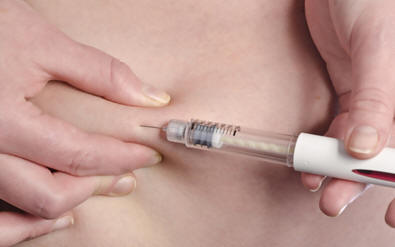 Instructions
Instructions
A trial with oral medication therapies suggested that over a period of three years prediabetes patients maintained their status and normoglycemia significantly better in the medication treated group when compared with placebo.[i] A study of troglitazone (now off the market) suggested that the preventive effect of medications may last well beyond a lengthy wash-out period, suggesting the potential to prevent diabetes in prediabetes patients.[ii]
Injection medications Now let's talk about injectable medications:
Insulin therapy in type 2 diabetes is reserved for higher glucose levels (>8% HbA1c, symptomatic hyperglycemia, and elevated fasting or high postprandial glucose levels) and for use in patients who do not achieve adequate glucose control on other therapies (6.5%-8.5% despite oral medication therapy), including an elevated fasting glucose level. There are five main categories of injected insulin therapies: rapid-acting, short-acting, intermediate-acting, long-acting, and premixed. Insulin therapy is the treatment of choice for patients with both diabetes and renal diseases. Careful monitoring is suggested when insulin is used alone or in combination with other therapies. |
||||||||




